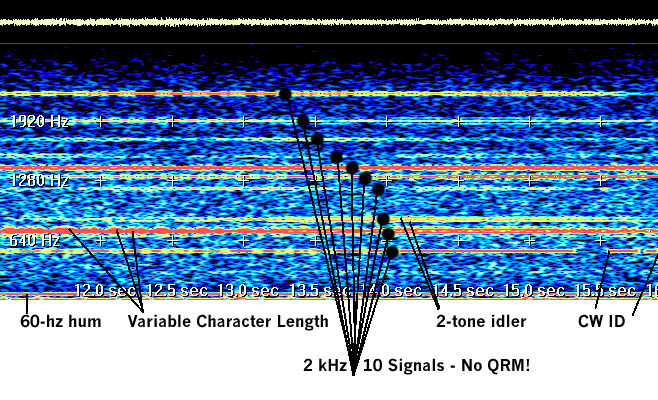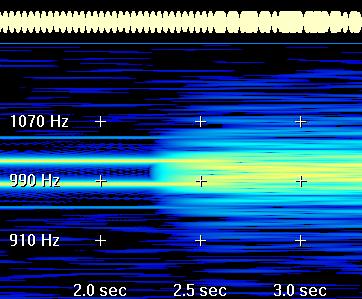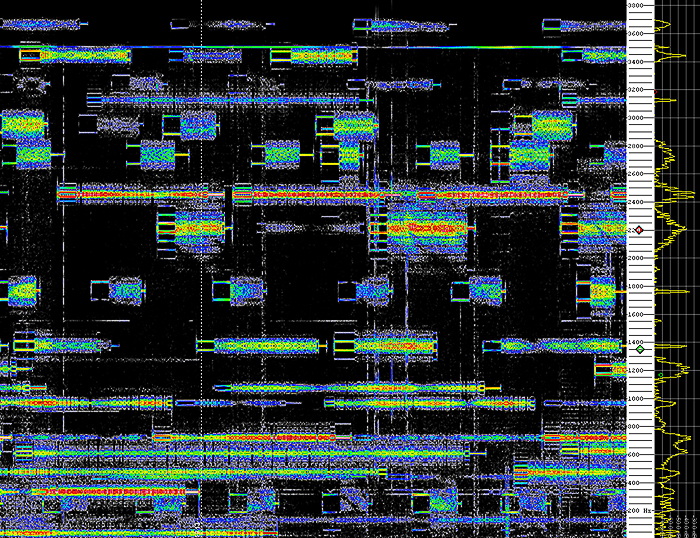PSK31 (bpsk)


PSK31 is a ham radio mode for keyboard-to-keyboard direct printing, using synchronous phase-shift keying at 31.25 baud. It's lots of fun, and it has become popular. This plot of a busy day around 14070 kHz shows why.
For a start, 10 stations are using 2 kHz, without interference. While it sounds like a plague of enraged insects, computer DSP sorts these signals out just fine, leaving room for 5 or so more. This is spectrum efficiency rivaling, if not surpassing, CW, with greater weak-signal accuracy than standard RTTY. Most of these signals printed fairly well with Digipan, a popular send/receive program.

This signal is locally generated, to better show what's going on in PSK31's warbly sine waves. Most of what we see is the idler, which maintains sync by flipping the polarity of the 980 and 1020-Hz tones at the baud rate. This doesn't look like anything special on the spectrogram, but the resulting amplitude modulation shows dramatically on the waveform at the top. Its lower duty cycle than FSK allows amateur transmitters to run cooler.
The two blue lines farther out from channel center are simply IM distortion. I hit the computer a bit hard. Overdriven PSK signals may show several of these unwanted sidebands, but clean ones have only the little, 31-baud, transient fuzz right up against the idle tones and between them. At 2.4 seconds a character is initiated, and the intelligence begins to congeal in a very narrow band around 1000 Hz. Theoretically, PSK bandwidth equals the baud rate, 31 Hz in this case, but in practice we see most signals around 40 or 50. As we can see, operators in a crowded band tend to set frequencies around 100 Hz apart.
Finally, the large plot at bottom was made during a PSK contest in February of 2009. These 4 kHz in the 80 meter band contain something like 20 stations. A few are using wider versions of PSK which sacrifice narrow bandwidth for greater speed on the brief contest exchanges. It's easy to see how much shorter their transmissions are. However, everyone here seems to be communicating.

Plots made with GRAM.EXE and Spectrum Lab.